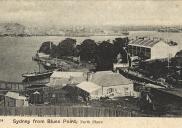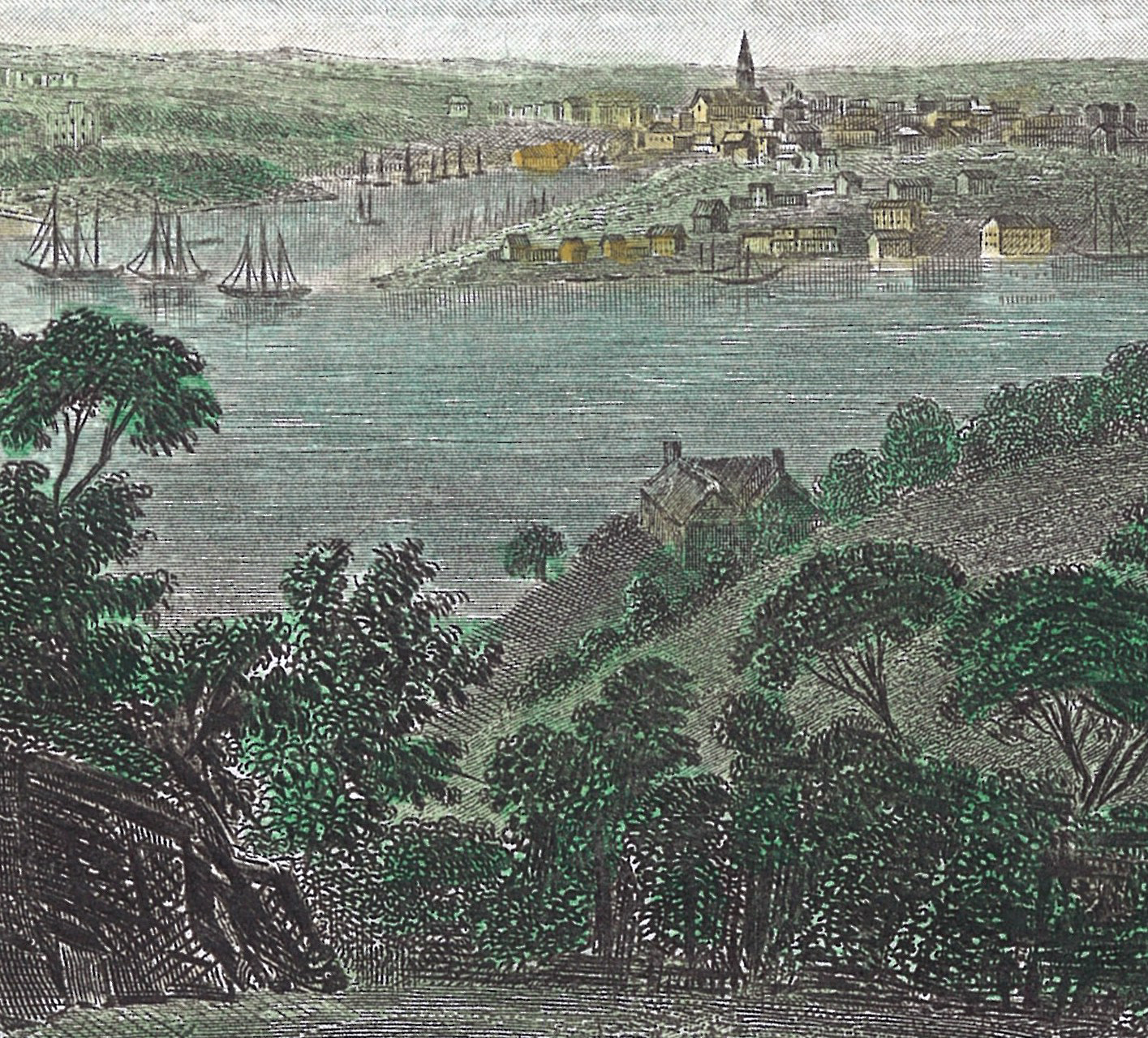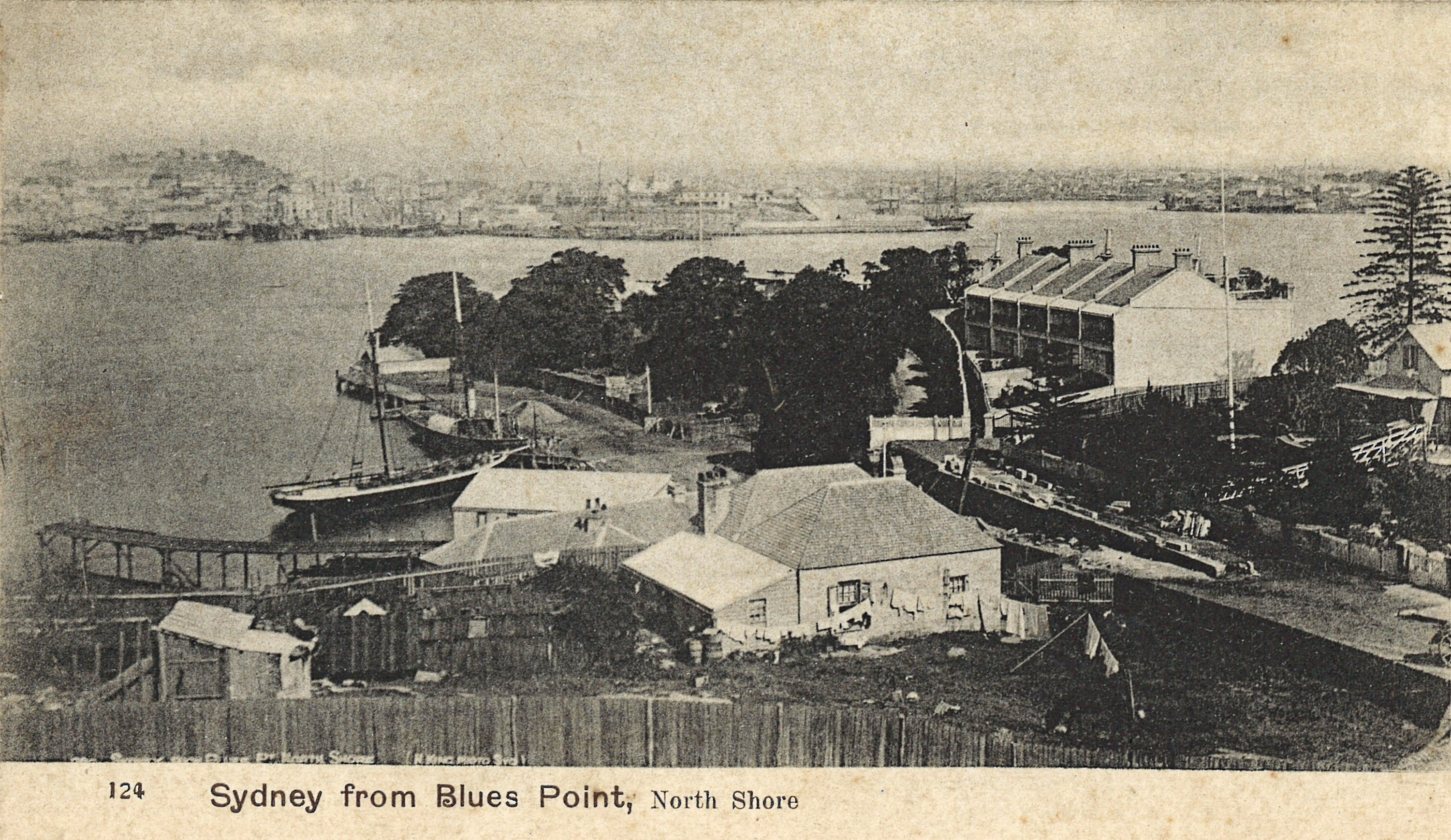|
Billy Blue’s villa, Blues PointBilly Blue was a convict of Jamaican or African origin who was sentenced to seven years in New South Wales in 1796.His transportation was delayed so, when he arrived in 1801, Blue had less than two years to serve. Sometime after gaining his freedom Blue established himself as a waterman. An 1807 advertisement in the Sydney Gazette claimed that he was the ‘only waterman licensed to ply a Ferry in this Harbour’. Billy’s ferry would have been a rowing boat, possibly with sail. After 1810, Blue made the acquaintance of Governor Lachlan Macquarie who travelled in his boat on several occasions. Keen to reward enterprising former-convicts, and due possibly to personal friendship, Macquarie granted Blue 80 acres ‘in the district of Hunters Hill’ – which included present-day North Sydney in 1817. The grant covered the peninsula that was then known as Murdering Point because of a notorious homicide, but would be known thereafter as Blues Point. The government reserved the right to build a road from the point and did so. This became Blues Point Road, the main thoroughfare in the area. Billy Blue established a productive estate on his land, called Northampton Farm, while continuing to work as a waterman. Blues Point, with its road, became the most convenient access point for that part of the north shore which was still a sparsely settled area known more for bushrangers and smugglers than notable habitations. Blue may have supplemented his income by selling oysters and other foodstuffs gathered from the harbour or grown on his farm. His obituary in 1834 noted that he ‘Purveyed for an army’, carrying about on his shoulders ‘fish, flesh, fowl, cheese, butter, wine, porter and ale’. (Sydney Gazette, 10 May 1834) At some point in the 1820s Billy built a ‘villa’ – one of the first to dot the northern foreshore. Probably the earliest, and possibly the only, image of this dwelling appeared in a French engraving of Sydney created not long after the house was built. It shows a building with a double hipped roof forming a central box gutter, and no obvious side verandahs. There may have been a verandah and a second storey at the front to take advantage of the panoramic view of the harbour and the town opposite. A newspaper advertisement described it as a two storey home, with two dressing rooms, bedrooms, sitting rooms on the ground floor, and a large bedroom and servant’s room upstairs. The doubling up of rooms may reflect the number of inhabitants. (Meg Swords, Billy Blue The Old Commodore, 1979) Although a widower by the 1828 Census, Billy lived in his villa with three sons, two daughters, and a son-in-law. The kitchen stood apart from the rest of the house as a precaution against fire, as was typical in the 19th century. Beyond was a shed, a well, a stockyard and piggery. Poultry were kept in a fenced run. Produce from the farm was presumably some of the foodstuffs that Billy carried as a ‘purveyor’. Billy died at his villa on 6 May 1834 and the estate was divided among his children. We can get some further insight into the villa’s setting in William Blue Jr’s advertisement for the lease of 30 acres of the family’s land at Blues Point in 1839. Prospective lessees were promised ‘sufficient firewood on and about their land, plenty of pure water, pure air, and a situation, for beauty of scenery, Panoramic views, and a general combination of Nature’s beauties, not surpassed, if equalled in the world.’ (Sydney Monitor and Commercial Advertiser, 18 Feb 1839). William was advertising building allotments for lease the following year and gradually Blues Point Road became a main residential thoroughfare. It is possible that Billy’s villa survived as ‘William Blue Jr’s cottage’ well into the 20th century, only to be demolished in the 1940s or 1950s to make way for a block of flats.
|
|




